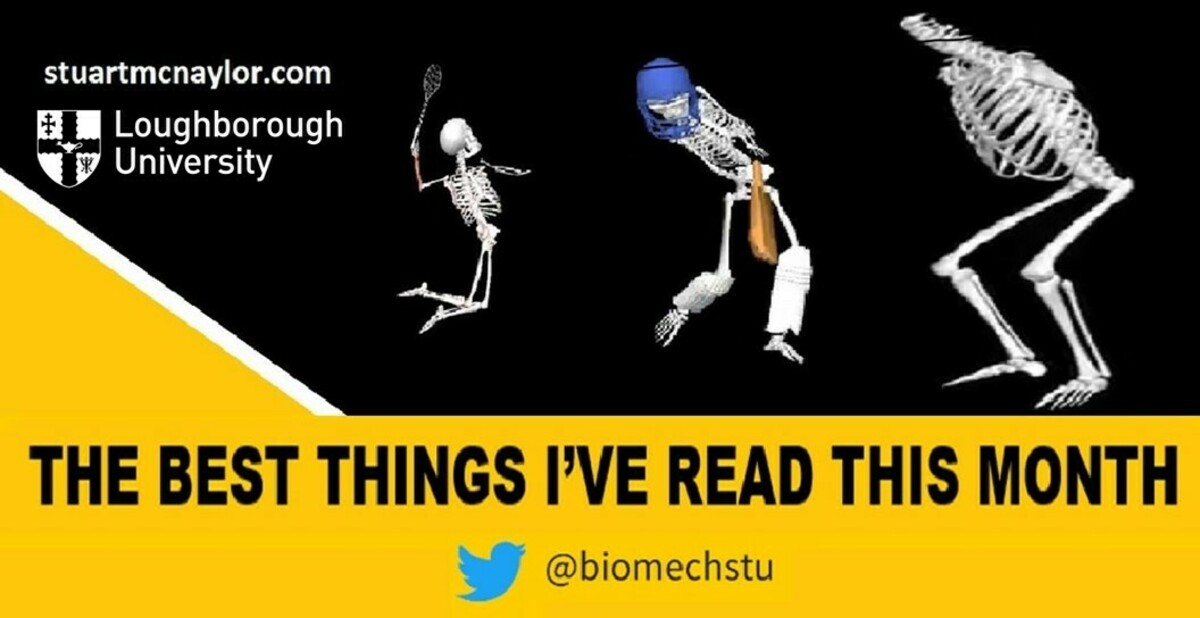
Here’s what I would like to share with you this month…
There are two sections: ‘What Have I Been Up To?’ and ‘What Have I Been Reading?’
What Have I Been Up To?
The newsletter is a bit delayed this month. Last week was crazily busy, with the ISBS Mid Year Symposium , my ‘Biomechanics at the Winter Olympics’ video series collaboration with the Biomechanics on Our Minds podcast, the return of our Vitality Netball Superleague, and all of the usual research and teaching commitments.
Remembering Type I / II Errors: I posted a video this month (below), telling the story of The Boy Who Cried Type 1 Error. This is my favourite way of remembering the difference between a type 1 or type 2 error. Daniel Fong replied on Twitter with his own way of remembering - counting the number of vertical lines in P or N for false Positive or false Negative.
Cricket Lectures: This month also saw the final two lectures in my recent Science of Cricket series - ‘Trunk Muscles for Cricket Fast Bowling?’ by Benita Olivier and ‘Anticipation & Perceptual Motor Skill in Cricket’ by Oliver Runswick. All seven lectures can be seen here .
What Have I Been Reading?
Now for the main part of the newsletter…
Raising the bar in sports performance research: An editorial by the Sports Performance section of the Journal of Sports Sciences set out their recommendations and expectations for high-quality research in the area. This formed the basis for an excellent discussion session within our research group. Whilst it might be a while before we see all articles meeting these standards, it is difficult to argue with the suggestion that we should be working towards them. Topics include open science, quality of evidence, theoretical and practical rationale, model validation, research focus, impact, use of mixed methods, and participant diversity.
Surface EMG and hypertrophy: This article critiques the body of literature making recommendations for resistance training exercise selection based on surface EMG results. Of primary concern is the limited evidence validating the amplitude of surface electromyograms as a predictor of longitudinal muscle hypertrophy. The topic was also discussed in a Twitter thread by the first author.
Statistics notes: A tweet by Maarten van Smeden made me aware of this long series of statistics notes in the BMJ. Each is one or two pages long, and all are open access. They cover topics such as missing data , dichotomising continuous variables , percentage differences , uncertainty and sampling error , or regression towards the mean .
Proximal to distal sequencing? This article by Karl Newell and Gareth Irwin discusses the often cited assumption that proximal-to-distal sequencing is ‘optimal’ for within-limb movement coordination. The authors discuss the influence of task and skill level constraints on the emergence of proximal–distal, distal–proximal, simultaneous activation, and other sequences. Examples from multiple activities are cited to inform the discussion. A second recent article featuring Gareth Irwin described the interface between biomechanics, motor control, and coaching within gymnastics.
Eccentric exercise for health and performance: This narrative review provides an overview of muscle and tendon adaptations to eccentric resistance exercise, with applications for both health and performance. The review is centered around a Special Issue on the same topic, featuring a number of articles covering various applications of eccentric exercise interventions.
Simulating resistance training: This study estimated the relative effort of various muscle groups during phases of an exercise (the clean) by comparing net joint moments from inverse dynamics to the estimated maximal angle and angular velocity specific net joint moments from a musculoskeletal model. This was done before and after altering model parameters to simulate the effects of strength or speed-strength training. I like the combined experimental and theoretical approach to the research question used here, something that can be built upon in the future through some of the approaches used to estimate maximal joint torque profiles in participant-specific simulation models.
Thank You
That’s all for this month. If you found it useful, please forward this email or share this link with friends, colleagues, or on social media.
What Have You Read Recently?
If you’ve read anything particularly interesting or useful recently, please reply to this email and let me know. I read all of the replies and I’m always looking for good reading suggestions.
Take care, and thank you for reading. I hope you have a great February!
Stu